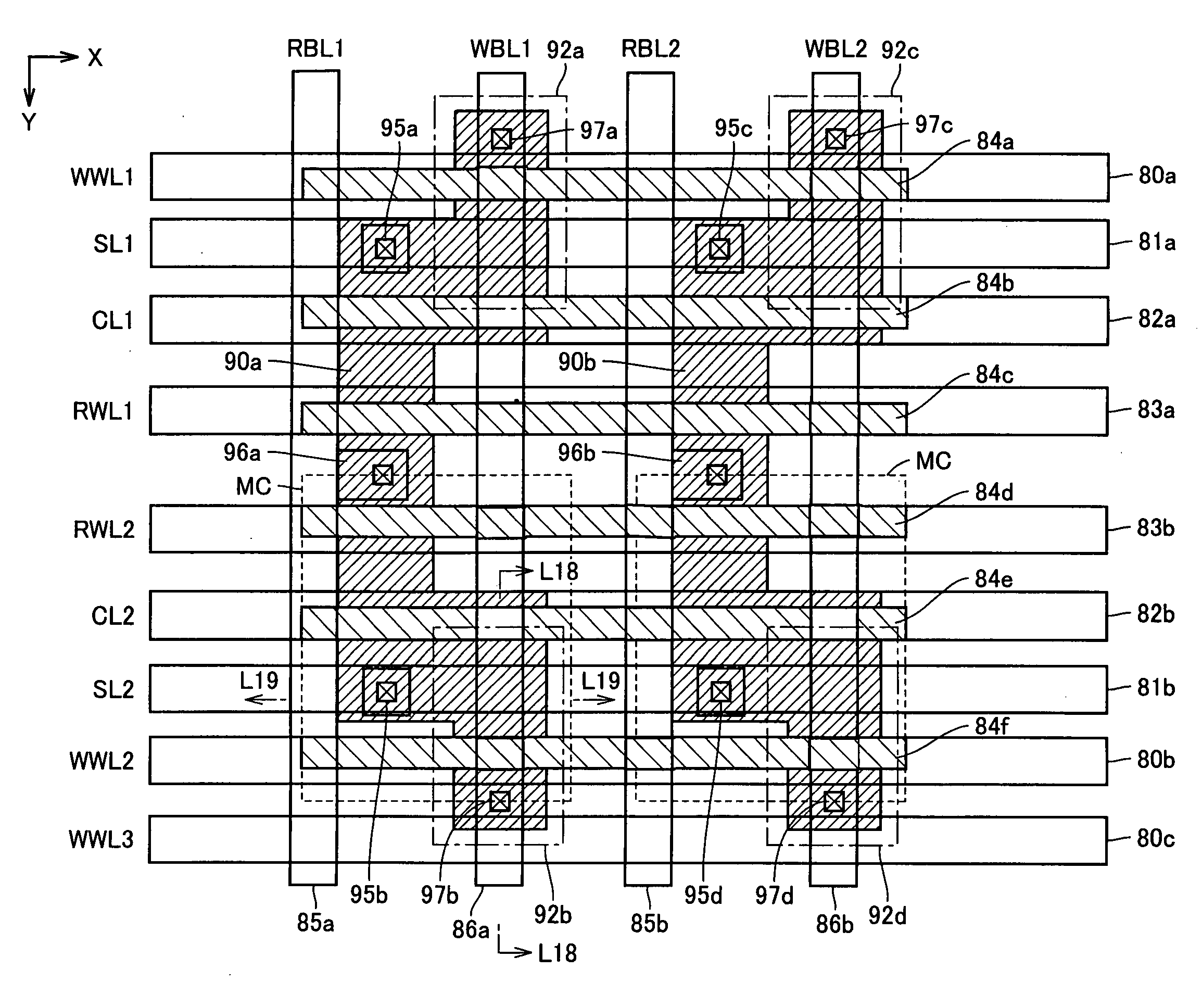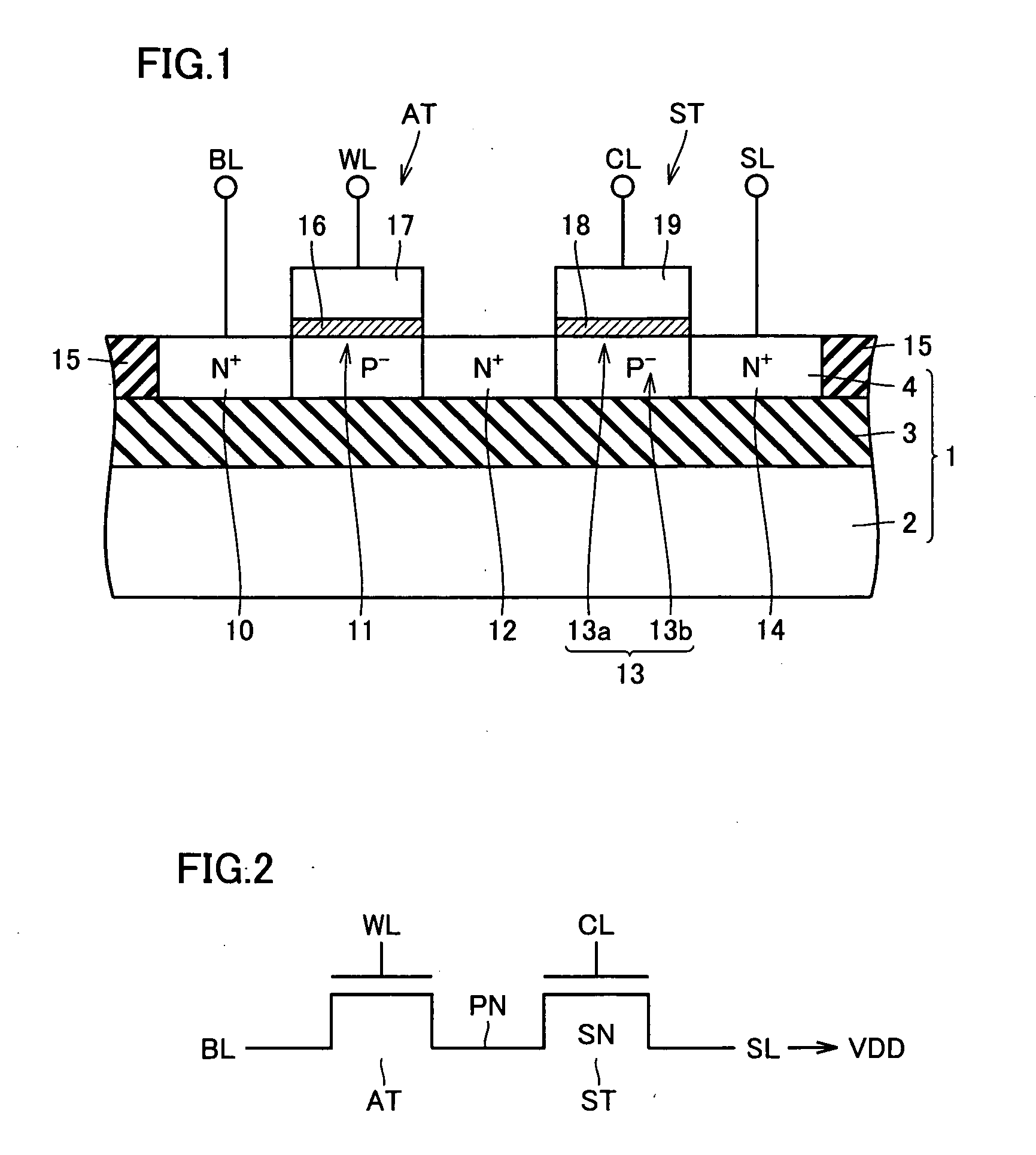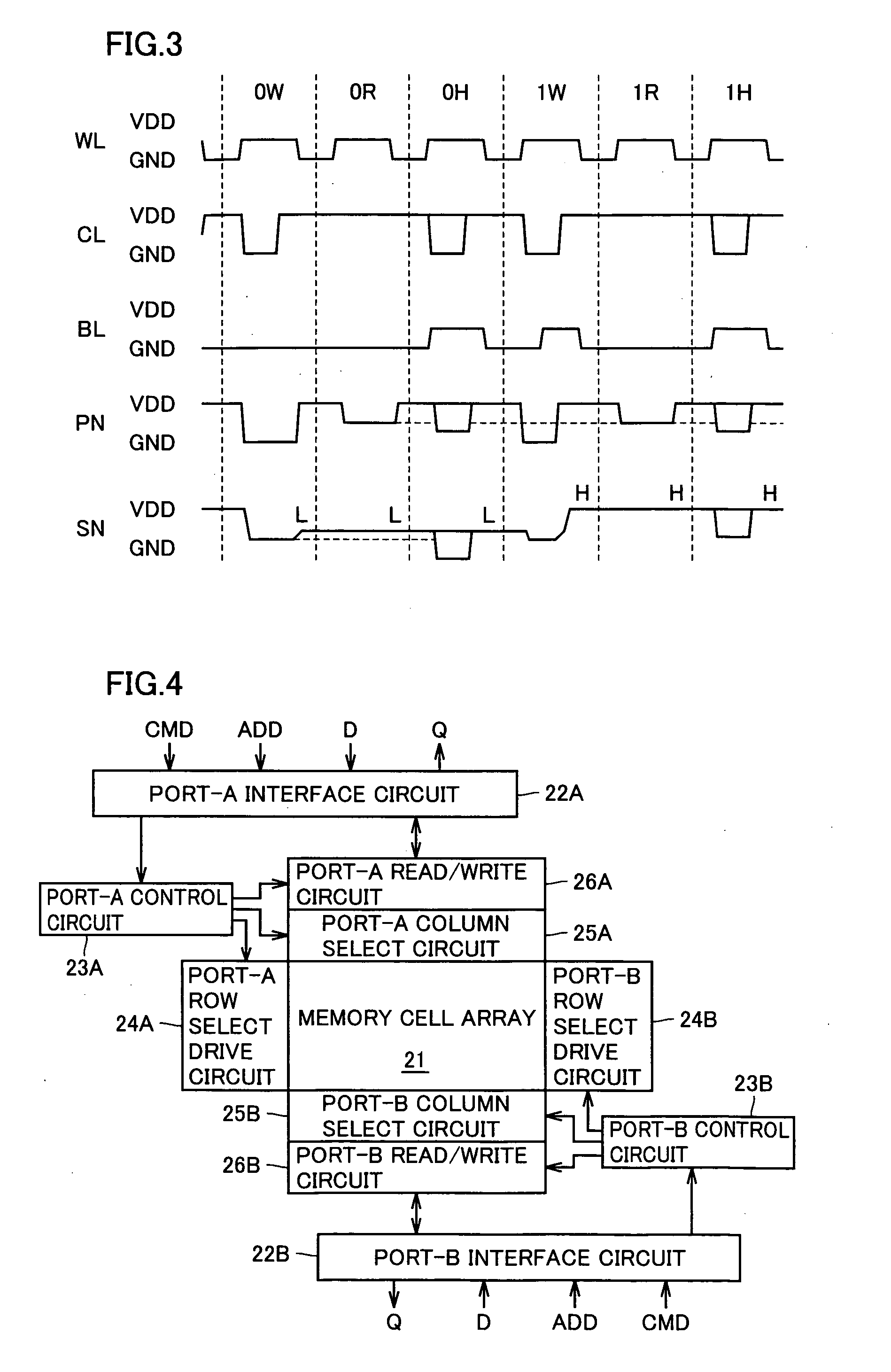Semiconductor memory device
a memory device and semiconductor technology, applied in semiconductor devices, digital storage, instruments, etc., can solve the problems of further complicated dram process, inability to scale capacitors, and increase process costs, and achieve the effect of fast access
- Summary
- Abstract
- Description
- Claims
- Application Information
AI Technical Summary
Benefits of technology
Problems solved by technology
Method used
Image
Examples
first embodiment
[0134]FIG. 4 schematically shows a whole configuration of a semiconductor memory device (which will be referred to as a “dual-port RAM” hereinafter) according to a first embodiment of the invention. In FIG. 4, dual-port RAM includes a memory cell array 21 having memory cells (not shown) arranged in rows and columns. In memory cell array 21, there are provided dual-port cells each allowing access from two ports A and B as will be described later. The dual-port cell is formed with the TTRAM cell being a base.
[0135]The dual-port RAM further includes port-A and port-B interface circuits 22A and 22B for accessing from the ports A and B, respectively. The “port” indicates a portion through which access of data is performed. Therefore, when reference is made to the whole memory, the “port” indicates the input / output portion for signal / data coupled to a data bus. When the wording “port” is used in connection with the memory cell, it indicates a portion through which write / read of data is pe...
second embodiment
[0182]FIG. 12 schematically shows a planar layout of a memory cell array of a semiconductor memory device according to a second embodiment of the invention. FIG. 12 representatively shows memory cells arranged in two rows and three columns.
[0183]In FIG. 12, rectangular active regions 50a, 50b and 50c are aligned in the X direction with spaces in between. Active regions 50d and 50e are aligned in the X direction with a space in between. Active regions 50a-50c are displaced in the X direction from active regions 50d and 50e by half a column.
[0184]In the memory cell row, second metal interconnections 51a and 51b are arranged on the opposite ends in the Y direction, respectively. These second metal interconnections 51a and 51b form source lines SL1 and SL2, respectively. Source lines SL1 and SL2 have regions coupled to a global source line although not shown, and receive the power supply voltage. Second metal interconnection 51a is electrically connected through source via / contacts SCTa...
third embodiment
[0227]FIG. 17 schematically shows a planar layout of a memory cell array of a semiconductor memory device according to a third embodiment of the invention. In FIG. 17, second metal interconnections 80a, 81a, 82a and 83a are arranged continuously extending in the X direction with spaces in between. Second metal interconnection 80a forms a write word line WWL1, and second metal interconnection 81a forms source line SL1. Second metal interconnections 82a forms charge line CL1, and second metal interconnection 83a forms a read word line RWL1.
[0228]Second metal interconnections 83b, 82b, 81b, 80b and 80c are arranged continuously extending in the X direction with spaces in between. Second metal interconnection 83b forms a read word line RWL2, second metal interconnection 82b forms charge line CL2 and second metal interconnection 81b forms charge line SL2. Second metal interconnection forms a write word line WWL2, and second metal interconnection 80c forms a write word line WWL3.
[0229]A p...
PUM
 Login to View More
Login to View More Abstract
Description
Claims
Application Information
 Login to View More
Login to View More - R&D
- Intellectual Property
- Life Sciences
- Materials
- Tech Scout
- Unparalleled Data Quality
- Higher Quality Content
- 60% Fewer Hallucinations
Browse by: Latest US Patents, China's latest patents, Technical Efficacy Thesaurus, Application Domain, Technology Topic, Popular Technical Reports.
© 2025 PatSnap. All rights reserved.Legal|Privacy policy|Modern Slavery Act Transparency Statement|Sitemap|About US| Contact US: help@patsnap.com



